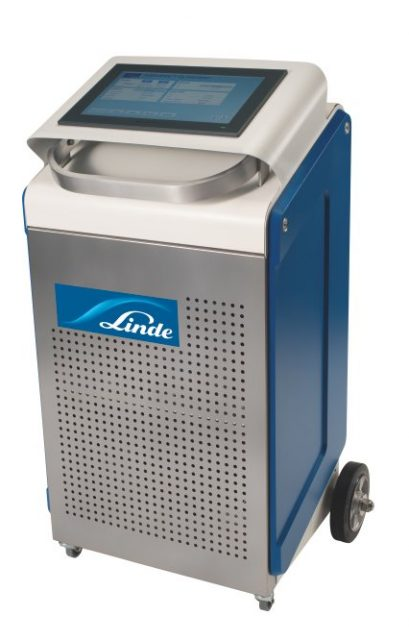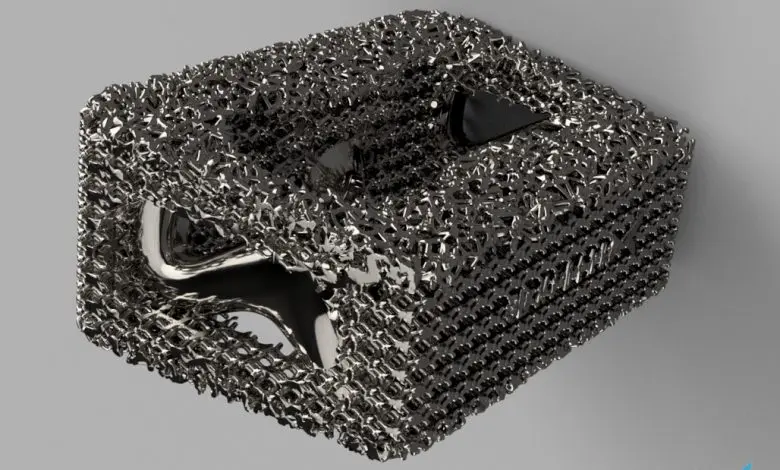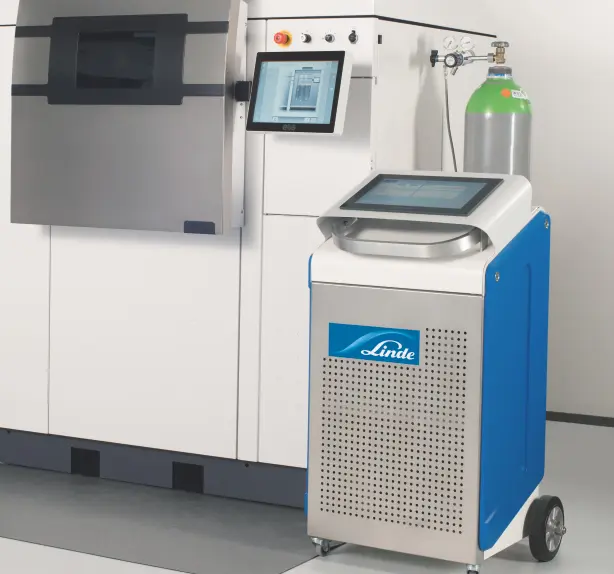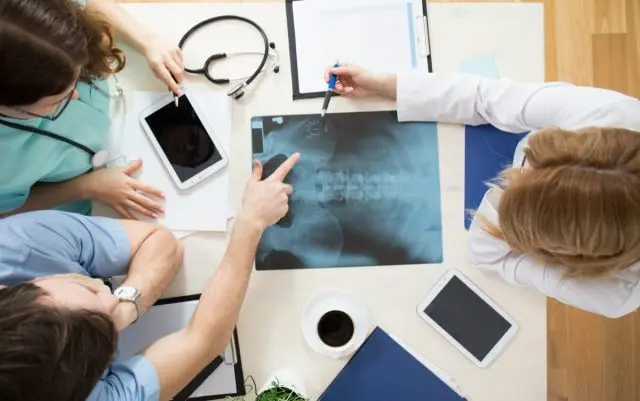Once thought destined mainly for prototyping, additive manufacturing is now increasingly employed in the development of spare parts, small series production and tooling in forward-thinking manufacturing industries such as aerospace, electronics, automotive and medical devices. Among industries at the forefront of innovative manufacturing, the medical sector has emerged as a major segment driving the growth of additive manufacturing: France’s 3D MedLab operates at the forefront of this segment
By fusing together metal powders layer by layer, using a number of different laser-based techniques, additive manufacturing can build complex components that would typically be very challenging – if not impossible – with more traditional subtractive manufacturing methods. The advantages of additive manufacturing include greater design freedom and customization, improved product strength and functionality, reduced assembly time for complex components, localized production, rapid time to market, mitigation of wastage, reduced obsolescence, decreased reliance on traditional suppliers, and even the creation of new materials with unique mechanical and behavioral properties.
A diverse manufacturing landscape
The additive manufacturing technology landscape for the production of medical devices is a diverse one, with various technologies developed to meet different production requirements including materials used, surface finish and cost. What remains constant is the need for high-quality atmospheric gases and the pioneering technologies enabling their application to optimize both the process and resultant product.
Inert gas, typically argon or nitrogen is central to the function of metal additive manufacturing as well as peripheral processes including pre-and post-production activities and is the media most often used for quenching during the vacuum heat-treating process.
Some of the key additive manufacturing processes include laser powder-bed fusion (L-PBF) whereby a laser source is applied selectively to a powder bed, which gradually indexes down as each layer is completed and new powder is spread over the build area; laser directed energy deposition (L-DED) uses a high-power laser beam, connected to a robot or gantry system, to form a melt pool on a metallic substrate into which powder or metal wire is fed; and binder jetting in which a liquid binding agent is selectively deposited to join powder particles and is applied in alternate layers with the material to be bonded.
Personalization, a game-changer
The use of additive manufacturing in the development of medical devices is unlocking extraordinary possibilities in terms of customizing implants, prosthetics, tools and other devices to the specific dimensions and needs of the patient. It not only represents a technological leap to improve medical care but also has the potential to significantly reduce healthcare costs. The time patients need to spend under post-operative physician care can be reduced as well as the need for corrective or additional surgeries. Additionally, the change from mass manufacturing to “on-demand” manufacturing is likely to result in reduced consumption of resources such as raw materials and energy. And with the knowledge gained from its use in rapid prototyping, additive manufacturing can offer considerably reduced product development time.
In contrast to the one-size-fits-all approach which has generally been the standard procedure until recently, additive manufacturing can produce components based on highly individual and complex lattice structures more efficiently than by traditional subtractive machining. Such multifaceted components aim to mimic human body parts which can better assimilate into the patient’s own bone and tissue structure, leading to fewer rejections and quicker healing times. It can also create quite specific and distinctive surface finishes which can enhance the success rates of surgical procedures.
Additive manufacturing of customized devices has undoubtedly benefited from recent advances in materials development – including innovative metallic alloys – which can improve durability and tribological properties (that is, the interaction between surfaces when in motion) of implants such as joint replacements.
A far-reaching value chain
As the production of medical devices via additive manufacturing concerns patient treatment, the process relies on an extensive and complex value chain, each part overseeing crucial aspects of development. Implants need to be designed specifically to a patient’s magnetic resonance imaging (MRI) or computed tomography (CT) scans, so involve medical experts to undertake initial investigative procedures, body imaging and patient consultation. The design of a virtual model must then be created using software and 3D scanners by specialist CAD designers. Once designs are approved by the surgeon, actual manufacturing can begin.
Various additive manufacturing technologies ranging from laser powder-bed fusion and laser directed energy deposition to binder jetting are used to build the component layer by layer, with the device undergoing a number of quality control processes – including post-printing cleaning, validation, testing and verification – before they are sterilized, packaged and delivered to hospitals, orthopedic clinics and rehabilitation centers.
The vital role of gases
Atmospheric gases play a fundamental role across each stage of the additive manufacturing process – from metal powder production and storage to enhance the printing process and post-printing cleaning.

The mechanical properties of a finished product are not only highly dependent upon the printing process itself, but the characteristics of the powder used in the process. The quality of metal powders used in additive manufacturing is critically important as it can impact on the physical properties of the finished product, including tensile strength, brittleness, impact resistance, heat tolerance and resistance to corrosion. Powder quality also plays a vital part in consistency and production repeatability.
High sphericity of the metal particles is needed so that the metal powder flows smoothly and evenly inside the printer. High powder layer density is also required to produce dense parts with high scan velocities, resulting in high productivity. The density of a powder layer is particularly dependent on particle shape and size, as well as size distribution. Particle shape influences porosity because the greater a deviation from a spherical shape leads to a lower density – and therefore more porosity. Additionally, a spherical shape also offers better flow properties during recoating. Gas atomization is the most effective approach to metal powder production due to the superior geometrical properties achieved. It requires not only a large supply of inert gases such as argon and nitrogen but the gas molecule expertise to help manufacturers fine-tune the atomization process to further improve powder characteristics, eliminate rejects – and to do so cost-effectively.
Manufacturing on Demand
Once the metal powders have been produced, it is essential to maintain the correct atmosphere during their storage in order to avoid humidity. The quality of metal powder has a fundamental impact on the microstructure and physical properties of the printed item, so they must be of a defined and consistent quality, meaning that correct storage and handling is vital. Humidity will age the powder, reduce its flowability and will increase the amount of oxygen during printing.

Metal powders are typically stored in containers or closed cabinets in the vicinity of the printer until needed. However, with each opening of the vessel ambient air and humidity is allowed to enter, affecting the chemical and physical characteristics of the powder and causing it to age. When stored in cabinets, the powder can react with the atmosphere within the cabinet itself. Even if the cabinet is purged, ambient air and humidity flow in each time the doors are opened resulting in contamination and degradation.
Linde has developed an innovative solution to resolving this storage challenge – the ADDvance® powder cabinet. The powder cabinet works with moisture control and monitoring unit to continuously measure humidity levels, triggering a high-volume purge gas flow as soon as the doors are closed to rapidly remove moisture in the air. It then applies a lower stream of gas to ensure a consistently low level of humidity, ensuring the quality of the valuable, sensitive metal powders is retained.
The essential element
Beyond metal powder and storage optimization, atmospheric gases play an even more important role in the core printing process. While additive manufacturing can optimize the production of medical devices, ensuring high-quality repeatability of the process and requiring less post-print finishing, the atmosphere in the printing chamber needs to be optimal and reproducible.
Although the atmosphere in the chamber is purged with high-purity inert gases such as argon and nitrogen to rid it of oxygen, impurities can still remain present due to incomplete purging, via loose connections or even within the metal powder itself. Even extremely small variations in oxygen content can impair the mechanical or chemical properties of metals sensitive to oxygen – such as titanium and aluminum alloys – and can affect the composition of the end product resulting in negative physical characteristics such as discoloration and even poor fatigue resistance.lin
Linde has dedicated the past few years to developing pioneering technology to overcome these atmospheric impurities in order to give manufacturers optimal printing conditions. The result – ADDvance O2 precision – provides continuous analysis of the gas atmosphere, detecting oxygen levels with high precision without cross-sensitivity. Recognizing O2 concentrations as low as 10 parts per million (ppm), the unit automatically initiates a purging process to maintain the atmosphere as pure as needed. The technology is already in use at medical device manufacturing companies at the vanguard of additive manufacturing, including 3D Medlab in France.
A case in point

Linde and 3D Medlab have recently undertaken a first-of-its-kind pioneering research project into how atmospheric conditions in the print chamber can be optimized to produce complex latticed structures for medical devices. The joint project represents a milestone in the field of orthopedic device development and is focused on the use of the titanium alloy Ti-6AI-4V.
The atmospheric trials involve a new helium/argon gas mixture created especially by Linde for the project to make the process smoother and cleaner, along with the use of Linde’s ADDvance O2 precision. Along with the new gas mixture, ADDvance O2 precision will give 3D Medlab precise, granular control over the oxygen concentration and humidity levels in the print chamber.
During any additive manufacturing printing process, blast powder residue or unfused powder can build up on the part being printed. Removing particles from holes, cavities and latticed structures can represent a particular challenge in the case of small, elaborate parts and components with complex geometries, especially as melting metal residue requires potentially damaging high temperatures. Depending on the application in question, a number of different surface finishing treatments can be applied to remove or reduce the surface roughness of additive manufacturing parts including barrel finishing, abrasive flow machining, plasma polishing, micromachining and electrochemical polishing.
Linde has developed a solution for more controllable, gentler cleaning – particularly important for medical-grade implants and devices. ADDvance Cryoclean technology creates dry ice particles, or “snow”, by expanding liquid carbon dioxide (CO₂) and using compressed air to accelerate the particles up to sonic speed, shooting them onto the surface to be cleaned. The cleaning effect relies on flash cooling, kinetic energy, embrittlement and gas impact. If needed, a further abrasive agent can be added to the dry ice particles to remove more stubborn powder residue.
What the future holds
Greater life expectancy along with an aging population globally is likely to see significant growth for bespoke medical devices, particularly as governments and healthcare bodies find themselves under pressure to meet mounting costs. Reduced patient stays in hospitals and better overall outcomes continue to rise up the healthcare agenda.
While reduced costs and recovery times have been key drivers, it is the possibility of personalization that has primarily championed the use of additive manufacturing for implants and medical devices. In addition to overall better assimilation to a patient’s body, the future will see several upcoming, cutting-edge technologies being integrated into additive manufacturing developed parts, including embedded sensors to enable remote medical examinations of patients, as well as highly customized aesthetic characteristics such as matching skin colors and even body art. Additionally, additive manufacturing technologies are allowing the embedment of innovative stretching and expansion of medical devices, which could have significant benefits for children and younger adults.
Further development is likely to be the growth of in-house “point-of-care” additive manufacturing where healthcare facilities will have the capacity to print implants and devices in-situ.
However, these opportunities will rely heavily on what is the often unseen but vitally important role of atmospheric gases in the development of the raw materials, storage, the core printing process and finishing.
* This article is reprinted from 3D Printing Media Network. If you are involved in infringement, please contact us to delete it.
Author: Pierre Forêt





Leave A Comment